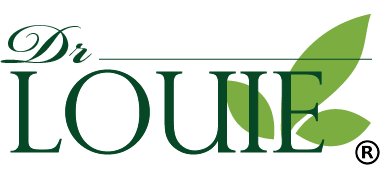
Peak Potency Vitamin C Serum: Why 20% at pH 3.4 is Better?
|
Time to read 2 min


|
Time to read 2 min
At DrLOUIE, we don’t just make skincare—we formulate for peak potency skincare.
Our Vitamin C Serum is built on decades of research and hands-on lab experience to give you visible results backed by real science.
So what makes our formula different?
It comes down to three key factors:
A clinically proven 20% concentration of pure L-Ascorbic Acid (active form of Vitamin C)
A precise pH of 3.4 to unlock absorption
Our exclusive Fresh Drop™ system, designed to deliver Vitamin C at its most potent state
Let’s dive into why these matter—and how they work together to give your skin the healthy glow it deserves.
Think of skincare like watering a garden.
If you water too little, your plants barely grow.
If you flood the soil, you wash away the nutrients.
There’s a perfect middle—and for Vitamin C, that sweet spot is 20% L-Ascorbic Acid.
Clinical studies show that concentrations up to 20% increase antioxidant protection, brighten the skin, and stimulate collagen. But going above 20% doesn’t increase effectiveness—it actually raises the chance of irritation and waste.
Below 8%: Not enough to create real change
20%: Strong enough to show visible improvement, gentle enough for regular use
Above 20%: May lead to skin sensitivity without added benefits
That’s why we use 20%: it’s the highest effective dose your skin can use fully , without overwhelming it. More is not always better—effective is better.
To understand pH and skin penetration, think of your skin as a high-security building —only certain molecules with the right “credentials” can get inside.
L-Ascorbic Acid is a charged molecule. At neutral or high pH, it keeps its charge — like trying to pass through a metal detector wearing a suit of armor.
But at a low pH below 3.5, something special happens: the molecule becomes uncharged (protonated). Now it’s sleek, agile, and can pass through the barrier with ease.
pH 3.4 is the golden zone.
At this level, L-Ascorbic Acid transforms into its most absorbable form—no charge, no resistance—so it can reach the deeper layers of skin where it actually makes a difference. But it's not TOO acidic to cause undue irritation.
L-Ascorbic Acid is powerful—but it’s also fragile. Exposure to air, light, or heat can cause it to oxidize, turning brown and losing its effectiveness.
Think of it like a fresh-cut apple. Crisp and bright at first—but leave it out, and it browns. That’s oxidation.
That’s why we created our Fresh Drop™ system, specifically for our Vitamin C Serum sold on our official website.
Manufactured in small batches—frequently
Never warehoused long term
Each bottle is date-stamped with the exact manufacturing date
This same date is also clearly shown on our product page, for full transparency
So when you open your bottle, you’re not getting something that’s been sitting on a shelf for 9 months. You’re getting Vitamin C in its peak potency skincare state —active, powerful, and ready to work.
With only 10 ingredients, no fillers, and a formulation built around science, not shortcuts, our Vitamin C Serum is designed for results.
And thanks to our Fresh Drop™ system , every bottle is freshly made and transparently date-labeled, so you can be confident you’re applying peak potency skincare every time.
Freshly bottled. Scientifically backed. Skin-changing
Al-Niaimi, F., & Chiang, N. Y. Z. (2017). Topical vitamin C and the skin: Mechanisms of action and clinical applications. Journal of Clinical and Aesthetic Dermatology, 10(7), 14–17. https://www.ncbi.nlm.nih.gov/pmc/articles/PMC5605218/
Pinnell, S. R., Yang, H., Omar, M., Riviere, N. M., DeBuys, H. V., Walker, L. C., Wang, Y., & Levine, M. (2001). Topical L-ascorbic acid: Percutaneous absorption studies. Dermatologic Surgery, 27(2), 137–142. https://doi.org/10.1046/j.1524-4725.2001.00179.x
Telang, P. S. (2013). Vitamin C in dermatology. Indian Dermatology Online Journal, 4(2), 143–146. https://doi.org/10.4103/2229-5178.110593




